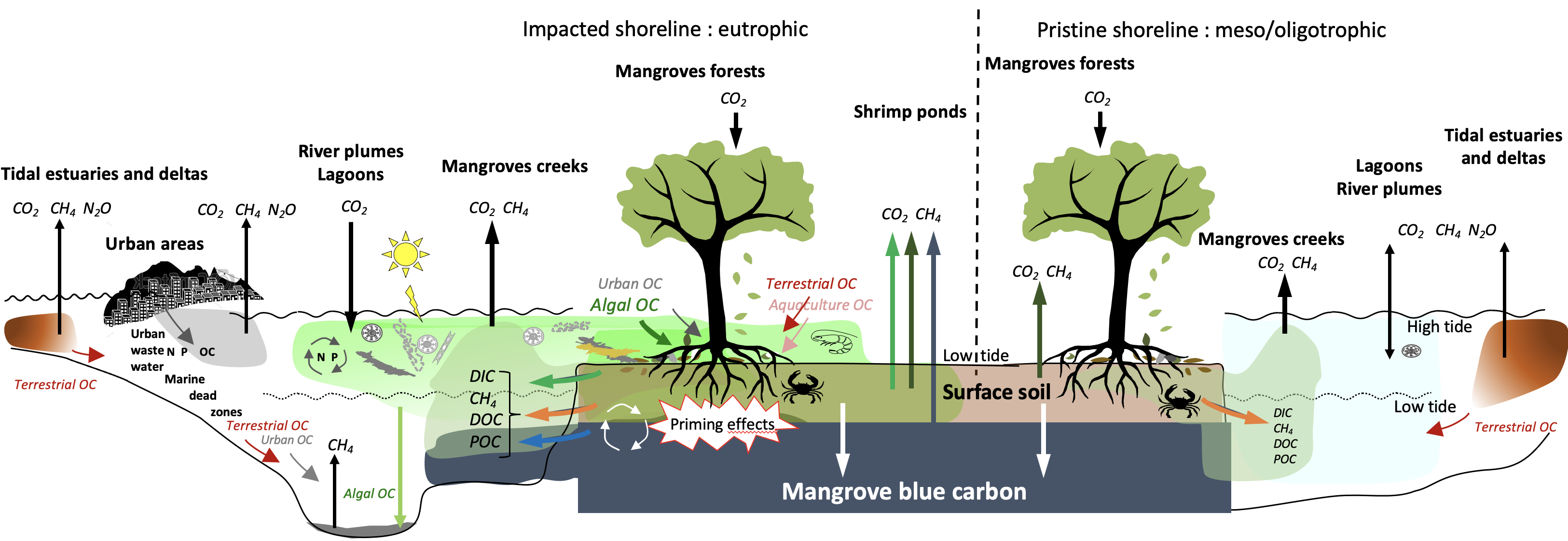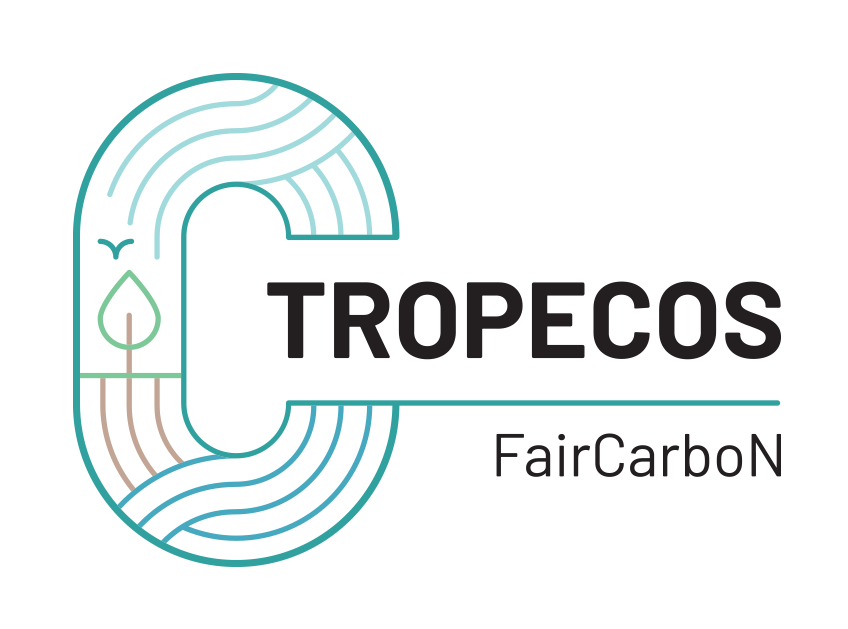In tropical regions, estuaries and mangroves are interconnected ecosystems that play a key role in greenhouse gases emissions and organic carbon storage at the global scale. While these carbon stocks and fluxes are significant globally, they remain insufficiently quantified compared to other types of ecosystems and other regions of the world. Furthermore, they are being strongly altered by land use and global changes: global warming, sea level rise, ocean acidification and extreme events such as hurricanes droughts and floods, potentially modify carbon exchanges at the land-sea interface. In addition, river damming, mangrove deforestation, aquaculture, and urbanisation also have strong impacts on sources and sinks of greenhouse gases of tropical coastal zone where population is still growing fast and marine eutrophication occurs.

The TROPECOS project funded by France2030 is one of the project of PEPR FairCarboN and involves a scientific community working on the coastal C cycle in three ultramarine territories (French Guiana, Guadeloupe, New Caledonia) and in two French international research structures with strong, long-standing partnerships in Vietnam (IRD international laboratory LECZ-CARE) and Brazil (CNRS international Research project VELITROP). TROPECOS contributes to produce data and improve scientific knowledge on carbon fluxes in tropical estuaries and mangroves, integrating adequately spatial and temporal variability of yet rapidly-transforming tropical coasts, in order to predict how their greenhouse gas footprint might change in the next decades.
Our research teams come from eight laboratories in France and have complementary skills in scientific domains such as forest ecology, oceanography, biogeochemistry, sedimentology, hydrology and microbiology and we have access to a large variety of coastal ecosystems in the tropical Atlantic and Indo-pacific regions.
Consortium
- BOREA Laboratoire de biologie des organismes et écosystèmes aquatiques, Paris, Concarneau, Pointe-à-Pitre.
- ISEA Institut de sciences exactes et appliquées, Nouméa.
- iEES Institut d'écologie et des sciences de l'environnement de Paris.
- IGE Institut des Géosciences de l’Environnement de Grenoble.
- LPG Laboratoire de Planétologie et Géosciences, Angers.
- AMAP botAnique et Modélisation de l'Architecture des Plantes et des végétations, Montpellier, Cayenne.
- EPOC Laboratoire Environnements et Paléoenvironnements Océaniques et Continentaux, Bordeaux
- LOG Laboratoire d'Océanologie et de Géosciences, Wimereux.
International partnership
- UFF Universidade Federal Fluminense, Departamento de Geoquimíca Niterói, Brazil
- UERJ Universidade do Estado de Rio de Janeiro, Faculdade de oceanografia, Brazil
- MPEG Museu Paraense Emilio Goeldi, Belém, Brazil
- UFPA Universidade Federal do Para, Belém, Brazil
- VNU-HCM / HCMUT Ho Chi Minh City University of Technology Vietnam
Institutions
- CNRS Centre National de la Recherche Scientifique
- IRD Institut de Recherche pour le Développement
- MNHN Muséum National d'Histoire Naturelle
- SU Sorbonne Université
- UGA Université Grenoble Alpes
- UA Université d'Angers
- Université de Bordeaux
- UNC Université de la Nouvelle Calédonie
- UA Université des Antilles
- ULCO Université du Littoral Côte d'Opale


























